
Study Abroad Consultants |
|




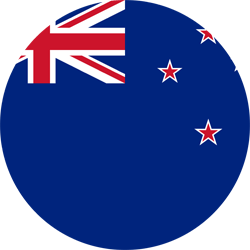
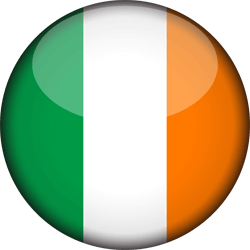
 |


Australia, the land of Kangaroos, has attracted the third largest number of the international students to come and study in Australia. Every year, around 400, 000 overseas students get educated from Australian universities, colleges and institutes. There could be hundred of reasons behind these unbeatable figures. However, spectacular nature view, beautiful infrastructure and peaceful climate are undeniable reasons behind its popularity as one of the most desirable study abroad destinations among overseas students. So, before you get study visa for Australia land on this beautiful country, you might be excited to know more about the lifestyle and climate in this country. Lets go further.
Australia is a country of endless opportunities and incredible beauty. A natural wonderland of sublime glamour, breathtaking beaches, incredible ancient rock formations, crystal blue waters and pristine rainforests, Australia is the sixth-largest country in the world and has the lowest population density per square kilometer. The majority of Australias atypical flora and fauna can be found nowhere else in the world and the lifestyle is surely one-of-its-kinds. The Capital of Australia is Canberra which is another beautiful state of the country.
Australian Capital Territory: The youngest of Australia States and Territory legislatures is the Australian Capital Territory (ACT), Territory and not a State. It is the home of Canberra, the Australian Capital.
Northern Territory: The Northern Territory, Territory and not a State, has Darwin as its Capital. It is highly celebrated for Uluru, earlier popular as the Ayres Rock. This ancient monolith is purely spellbinding and a treat to the human senses. It captures the imagination and leaves the visitors mesmerized; that too with a deep sense of wonder they hardly experienced ever.
New South Wales: Recognized as the home to Sydney, New South Wales is one of the most charming and delightful state in the world. The boundaries of the state span from the sub tropical northern border with Queensland to the extra moderate Victorian border.
Queensland: Queensland is bisected by the Tropic of Capricorn, and is rightly known as the Sunshine State of Australia. The Capital of Queensland, Brisbane, is one of the fastest emerging cities in Australia and it provides an exceptional dais for touring the Gold Coast, popularly known as Australias Playground, and the Sunshine Coast which is famous for its surfing beaches, rainforests and elegant resorts like Noosa.
South Australia: South Australia is overwhelmed with adorable attractions to allure the visitors. Adelaide, the state capital of South Australia which is renowned as the City of Churches, is a lovely small paradise and is perhaps quainter than any other mainland capital.
Tasmania: Tasmania, the Apple Isle, showcase glorious lakes, majestic mountains, rivers, beaches, waterfalls, and much more. It makes a strong statement about how effortless it is to go across the whole island in just a matter of few days. Historic settlements of the quaint stone cottages that have been transformed into comfy and cherished accommodation dot the landscape.
Victoria: Victoria is Australia’s smallest and the most densely populated state with Melbourne as its Capital. Melbourne, dominated by trams, is a fine medley of old European sophistication and the trends of the modern world. This small State, tenderly known as the Garden State, reaps a strong advantage from its comprehensive road network and is therefore great for a touring holiday.
Western Australia Western Australia is the largest of all Australian states. Perth, the City of Lights, is the Capital and the largest city in Western Australia. It enjoys a Mediterranean climate all-year-round, and is surrounded by gorgeous gardens and reserves which are in deep contrast with the Outback terrain lying beyond them.
When it comes to accommodation in Australia, there are following four options to choose from:
Short term accommodation:This is a helpful option when you first arrive in Australia and need time to settle there. You can look for hostels or hotels offering discounted price. Alternatively, you can go for temporary housing offered through your institution while you get settled after getting study visa for Australia.
Rental:Secondly, you can rent or lease an apartment of property that you can share with your friends. Sharing with friends make it a cost-effective and luxurious option for accommodation. You will need to talk to real estate agent and get a bond signed that held to repair any damage to the property while renting. Partial or full amount may be refunded to you once your tenancy agreement has terminated.
On Campus:Most of the universities, colleges and institutes offer fully-furnished and on campus apartments to the students including meals and cleaning. This is the best option to minimize travelling time and cost. For this, you have to contact institute’s staff directly.
Home stay:This is another best option for younger students who want to enjoy full house amenities. Here, students have to stay with an Australian families offering home stay accommodation. A whole screening is conducted to check whether or not the house environment is perfect for students.
FoodAustralia offers a fantastic and diverse range of food for the students who want to study in Australia. A variety of fruits and vegetables are available in Australian produce markets. As a result, students face no difficulty in finding the foods they used to fancy at home as the market caters to a varied population.
CurrencyAustralia uses a dollars and cents system of decimal currency, with 100 cents making a dollar. The bank notes in use are A$5, A$10, A$20, A$50 and A$100. The Coins used are the silver-colored 5 cent, 10 cent, 20 cent and 50 cent and the gold-colored A$1 and A$2 coins.
TransportStudents who want to study in Australia may benefits by less expensive and easy transport system. Australia has a comprehensive public transport system which comprises of trains, buses, tramways, ferries, two major national airlines and a large number of regional airlines. To go with it, and there is an extensive network of metered taxicabs running round-the-clock in major cities and towns. All transport terminals, main hotels and shopping malls have taxi stands; or else, you can hail one in the streets.
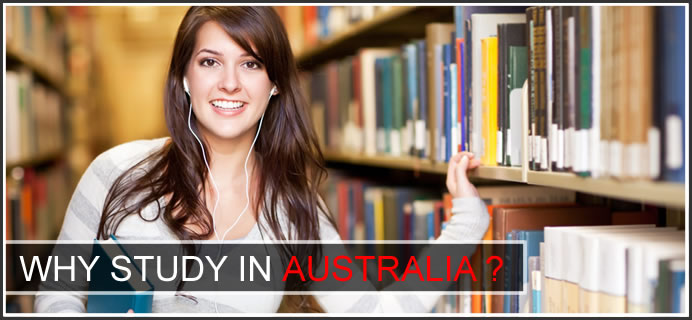
Australia consists of 41 government-recognized Universities and Number of Government recognized Technical and Further Education (TAFE) Institutions and Colleges. All Australian Universities are established or recognized by Legislation enacted by Australias state or Federal Government. Australia has a single comprehensive system of twelve qualifications known as Australian Qualifications Framework (AQF). This distinguishes Australia from many other Countries with unconnected qualifications. The AQF is endorsed by the Australian Government and recognized throughout Australia and by other countries.
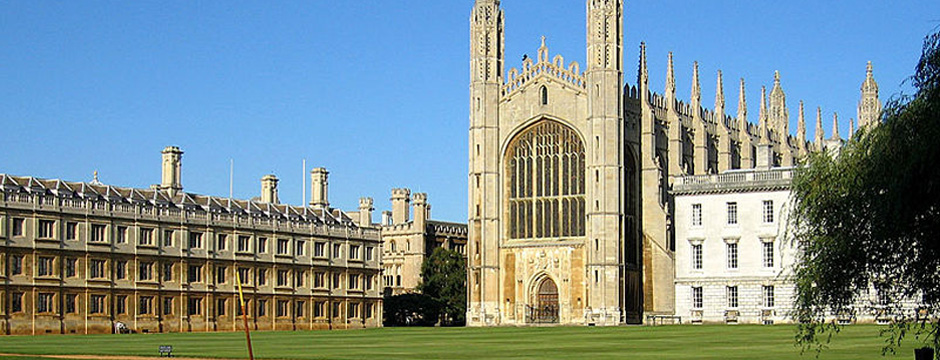
The Australian qualifications framework (AQF) was designed by the Australian Government to make sure those Australian qualifications are the same throughout the country and that they represent the same high standard of education. Education System is broadly divided in University and vocational Education.
University offer:
|

The Department of Immigration Australia has overhauled Streamlined Visa Program (SVP) by Simplified Student Visa Framework (SSVF). The change came into effect from 1st July, 2016 onwards.
According to new rules of SSVF, now students from any part of the world will apply for Australia student visa through single visa subclass that is Subclass 500 (Student). And, their guardian can apply through Subclass 590 to look after their under 18 child Thus, all seven previous assessment level frameworks that is Subclass 570 to Subclass 576 are now merged into two subclasses (500 and 590) only.
From now onwards, it is the education provider and country of citizenship that will be used as risk factors to determine the level of English language proficiency and financial capacity that the student needs to provide with their visa application.
Here are two types of visa that you can apply for, being a student or under 18 student’s guardian.
If you want to provide care to an international student who is going to study in Australia and is below 18 years of age, apply for this visa. Requirements :
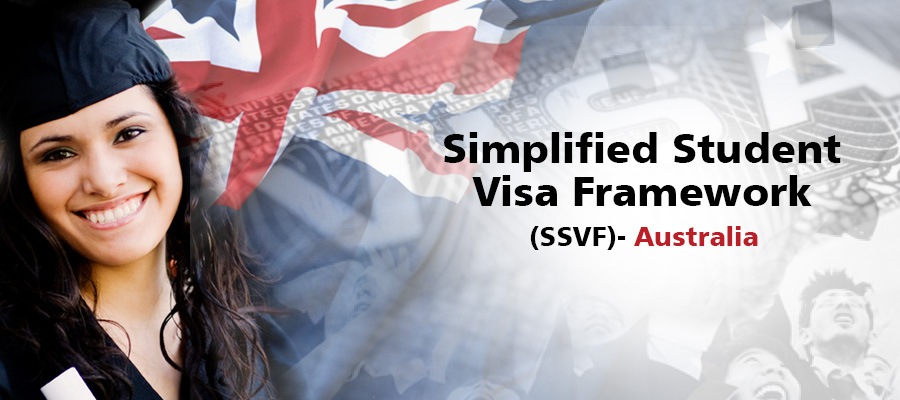
According to SSVF – Simplified Student Visa Framework, all education providers and countries are divided into three categories: Category 1, Category 2 and Category 3, as per their last 12 months record. And, India falls under the Category 3. According to the category chart, Students, from India, can apply in all three categories. Documents checklist will be as per the category of the Education provider. Education provider’s category can be checked through Document checklist tool.
| Education Provider Immigration Risk Rating | Country Immigration Risk Rating | Possible Evidentiary Requirements | |
| Lower Evidentiary Requirements | One | One, Two or Three | Generally these students would not be required to provide evidence of their English language and finanacial capacity to the Department (similar to current SVP and AL1 arrangements). |
| Two | One or Two | ||
| Three | One | ||
| Higher Evidentiary Requirements | Two | Three | Generally these students would be required to provide evidence of their English language and finanacial capacity to the Department |
| Three | Two or Three | ||
| Geniune Temporary Entrant Requirement - continues to apply to all students | |||
This document checklist tool provides a list of evidences you will need to submit with your application. Department can ask the student for additional evidences. If you choose package courses, student has to select the education provider offering the final course. If student has not selected education provider, he or she can leave the field blank or select 'My provider is not listed'
Evidentiary requirements indicated by the tool show the documents you need to provide with your student visa application. In addition to these, your education provider might have their own enrolment requirements.

International students are required to demonstrate and/or declare that they have genuine access to sufficient funds to be granted a Student visa. Applicants may have to demonstrate sufficient funds to cover these expenses for the first one or two years in Australia.
This helps to ensure students are better able to make the most of their studies and have a safe and enjoyable experience in Australia. Funds should be sufficient to contribute to the cost of travel, tuition, school costs of any dependents, and living costs.
The financial requirements per SSVF applied from 1 July 2016.
| Expenses | Per Person | Amount required in AUD |
| Travel |
|
|
| Tuition |
|
|
| Living |
|
|
| Expenses | Per Person | Amount required in AUD |
| Travel |
|
|
| Living |
|
|

Identify your academic needs and career goals. Accordingly, start researching on web about the best colleges/universities offering the best courses of your interest. Also consider location, tuition fee and course duration while researching. Once you are finalized with education provider, apply online for admission in same. Along with application form, you will be asked to submit evidence of your academic documents and English Proficiency. Some courses will ask you to appear for interviews with college persons. Offer letter will take a few working days for processing.
One offer letter is received; you need to show your financial ability in form of evidence of sufficient funds to cover tuition, travel and living costs. The Assessment Level (course subclass) of the student determines the amount of funds required, provider of funds and how long the funds must be held. If you have dependents (such as a spouse and children), you need to show evidence of being able to cover living costs for them.
Note: Sometime you need to submit evidence of financial support at the time of applying for offer letter. Requirements vary from college to college.
Once college approves your funds, you need to pay your 6 months tuition fees (as mentioned in your offer letter), ELICOS (if applicable) and cost of OSHC (Overseas Student Health Cover). After you have accepted your Offer and paid mentioned funds, you will receive a Confirmation of Enrolment (COE) by email. It confirms that an international student is eligible to enroll on a course and start with process of Australia student visa. This will outline your course start date, total course fees and total duration of course.
Afterwards, you will need to undergo a medical examination by one of the doctors approved by the Immigration Australia. A list of doctors approved by the panel can be found here: (https://www.border.gov.au/Lega/Lega/Help/Location/india). Select doctor according to your convenience.
Please note that for Australia student visa, the visa application is lodged online by creating immi account on immigration website. Firstly, you must complete a visa application form online. The documents required to upload as per the document tool checklist according to the Education provider include: Statement of Purpose (SOP), Copy of passport, IELTS score card, COE(s), all academic documents, work experience (If any), photograph, Sponsors Id proofs, their occupation proofs and financial documents. All these documents must be appropriately arranged. After uploading all the required documents, pay for your visa application charges through credit card and submit the Visa Application.
Your student visa will last for the duration of your studies, including holiday periods.
How Hub International helps you with this Process?
In order to get student visa for Australia, you should be careful at every step. Single mistake can create huge mess with your visa application. At Hub International, We can help you navigate through various processes available to make studying overseas a whole lot easier.
Here is how we help you: